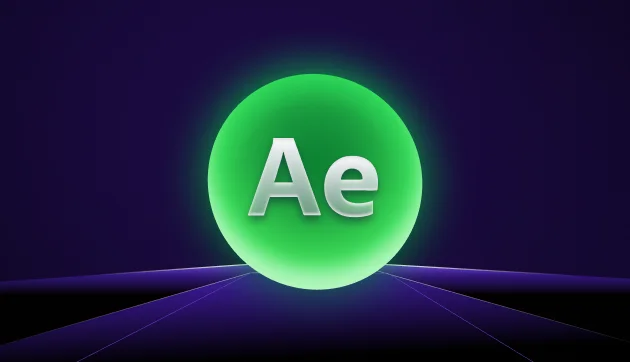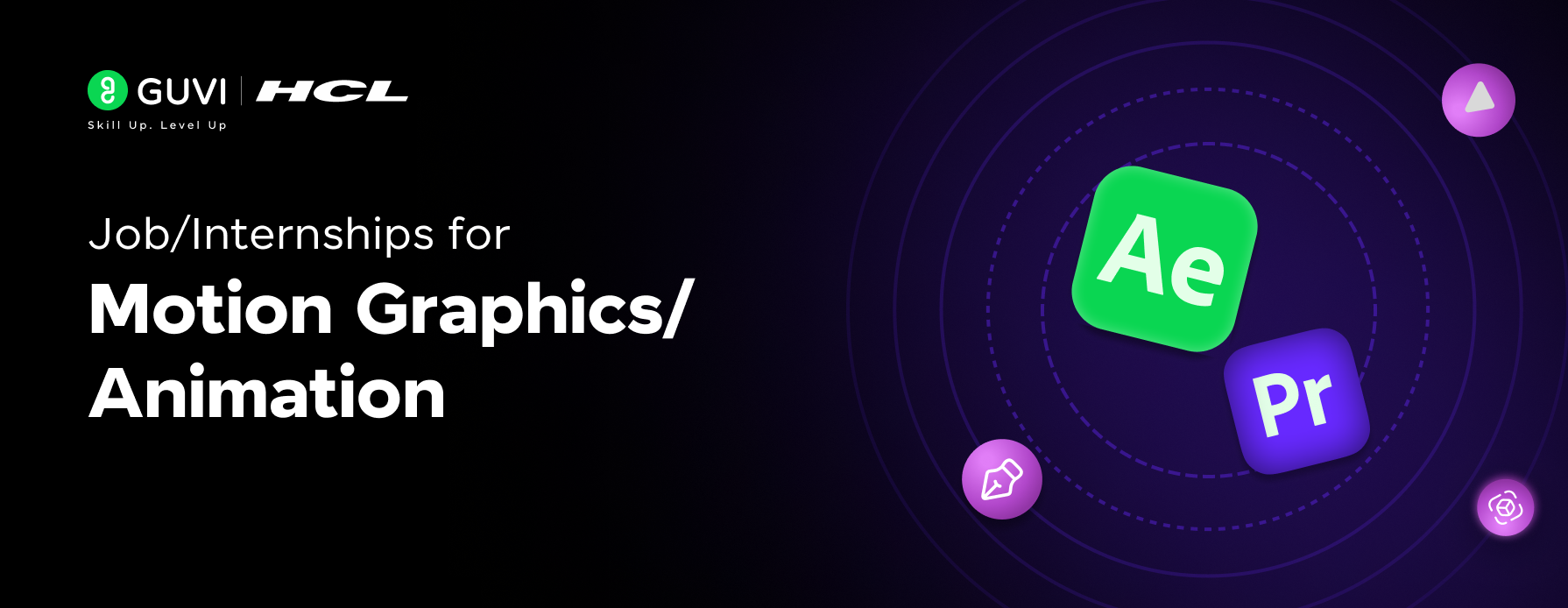
13 Common Mistakes To Avoid in Motion Graphics Design
Mar 03, 2025 5 Min Read 3371 Views
(Last Updated)
Motion graphics remain an influential medium, transforming how brands present content across digital platforms. Yet, even the most skilled motion designers can fall victim to certain pitfalls that can reduce the effectiveness of their creations.
Recognizing the common mistakes to avoid in motion graphics design is crucial for any designer aiming to produce engaging and impactful visuals. These errors can range from technical aspects to strategic choices in visual storytelling.
Before we discuss the specifics of these pitfalls, let’s give you a quick overview of motion graphics design, its importance, and why avoiding these common mistakes is more important than ever.
Table of contents
- What is Motion Graphics Design
- 13 Most Common Mistakes to Avoid in Motion Graphics Design
- Mistake 1: Lack of clarity and overcomplicated Visuals
- Mistake 2: Poor timing and pacing in animations
- Mistake 3: Inconsistent style and branding
- Mistake 4: Poor audio quality
- Mistake 5: Lack of feedback
- Mistake 6: Insufficient pre-design planning
- Mistake 7: Inappropriate software tool selection
- Mistake 8: Inefficient workflow and failure to test and refine
- Mistake 9: Neglecting user focus through animation
- Mistake 10: Overuse of symmetry and poor visual balance
- Mistake 11: Plagiarizing designs and overreliance on stock images
- Mistake 12: Low-resolution and poorly formatted graphics
- Mistake 13: Ineffective use of color, contrast, and negative space
- Final Words
- Frequently Asked Questions
- How can motion graphics designers enhance visual storytelling?
- Can improper use of color impact motion graphics design?
- What is the impact of not testing motion graphics before final delivery?
- Can AI improve the efficiency of motion graphics production?
- How does AI influence creative decisions in motion graphics design?
What is Motion Graphics Design

Motion graphics design combines design principles with animation and audio to create persuasive visuals that tell a story or communicate messages. As of this year, its importance in marketing continues to grow, with brands making use of dynamic visuals to capture audience attention and convey complex information swiftly and memorably.
Understanding the fundamentals and importance of motion graphics design helps designers avoid common mistakes that could undermine their projects’ success. As we turn our attention to the common pitfalls, it’s essential to consider that even experienced designers might overlook certain elements that are critical for a successful motion graphic.
The following 13 mistakes are universally acknowledged challenges in the industry. By addressing these, motion designers can enhance the quality and effectiveness of their work.
13 Most Common Mistakes to Avoid in Motion Graphics Design

While motion graphics can mesmerize and inform, certain oversights can greatly impact the final product. Here, we outline 13 common mistakes that should be avoided regardless of the project’s scope or the designer’s experience level.
Mistake 1: Lack of clarity and overcomplicated Visuals
One of the most detrimental mistakes in motion graphics design is a lack of clarity, which is often caused by overcomplicating visuals.
When designers attempt to incorporate too many elements, animations, and transitions, it can overwhelm the viewer, making it hard to figure out the intended message.
To avoid this, motion designers can prioritize simplicity and focus on key messages. They should use clear, concise visuals and ensure that each element serves a purpose, enhancing the narrative rather than detracting from it.
Compelling motion graphics should straightforwardly communicate ideas, using complexity only when it adds meaningful emphasis.
Before we proceed further, it’s essential to have a solid foundation in graphic design principles and animation basics. If you’re eager to dive deep into creating captivating motion visuals, consider joining GUVI’s Adobe Certified VFX Career Program with AI Integration. In this program, you’ll learn the fundamentals of animation, visual effects, and storytelling techniques. Gain hands-on experience with industry-standard tools and techniques, and unlock your creativity to craft stunning motion graphics for videos, presentations, and more.
Mistake 2: Poor timing and pacing in animations
Timing and pacing are crucial to the success of motion graphics. Poorly timed animations can disrupt the flow of information, making content difficult to follow or unexpectedly jarring.
Common mistakes to avoid in motion graphics design include rushing through important details or dragging out less significant elements, which can disengage your audience.
Designers should try to create a balanced rhythm that mirrors the natural pace of user comprehension, allowing viewers to absorb information comfortably.
Tools like timing charts, ease-in/ease-out or graph editors help refine these aspects, ensuring a smooth, natural, and coherent viewing experience.
Also, Explore More About Animation in UI/UX: Captivating Designs Through Motion
Mistake 3: Inconsistent style and branding
Consistency in style and branding is important in establishing a professional and recognizable motion graphics piece.
A common mistake motion graphics designers make is inconsistently applying visual elements such as color schemes, typography, and graphic styles, which can lead to a confusing and disjointed final product.
Developing and adhering to a clear style guide throughout the project ensures all motion graphics components align with the brand’s identity and that the overall message remains unified and clear.
Also Read: Best Techniques for Creating Seamless Animations with CSS and JavaScript [2024]
Mistake 4: Poor audio quality
Audio is integral to motion graphics, yet it needs to be more noticed or highlighted. Poor audio quality can greatly reduce the impact of a motion graphic, no matter how visually appealing it may be.
Common mistakes to avoid in motion graphics design include using low-quality sound clips, inappropriate music choices, or misaligned audio cues.
Designers should invest in high-quality audio files, select music and sound effects that enhance the narrative, and ensure that the audio syncs perfectly with the visuals.
This harmonization of sound and sight can dramatically uplift the viewer’s experience.
Also read: Motion Graphics Interview Questions & Answers
Mistake 5: Lack of feedback
Feedback is essential in honing one’s skillset in motion graphics design. Not seeking or ignoring critique can lead designers to repeat mistakes without realizing them.
Designers can dodge away these common mistakes by actively seeking feedback from peers, mentors, and clients and using it constructively to improve future projects.
Mistake 6: Insufficient pre-design planning
A lack of proper pre-design planning can lead to significant challenges in any motion graphics project.
Common mistakes to avoid in motion graphics design include jumping into the design phase without a clear strategy or failing to define the project’s goals and target audience.
Effective pre-design planning involves thorough research, storyboard creation, and preliminary sketches, which guide the design process and ensure that every element aligns with the intended message and audience needs.
This foresight can prevent costly revisions and ensure the project meets its objectives efficiently.
Also explore: Must-have Skills for Motion Graphics Designers in 2024
Mistake 7: Inappropriate software tool selection
The choice of software plays a major role in creating motion graphics. Opting for tools that don’t meet the project’s requirements can limit a motion designer’s ability to execute their vision effectively.
Common mistakes to avoid in motion graphics design include using basic software for complex animations or overly complex tools for simple projects, which can lead to inefficiencies and frustration.
Motion designers should assess the project’s needs and choose software with appropriate features and capabilities. This will ensure a smoother design process and a higher-quality final product.
Mistake 8: Inefficient workflow and failure to test and refine
An inefficient workflow can delay the completion of a motion graphics project, while failure to test and refine can lead to a subpar end product.
Common mistakes motion graphics designers make include neglecting to establish a systematic workflow and skipping the revision process, where key adjustments are made based on testing feedback.
To avoid these pitfalls, designers should develop a structured workflow that includes regular testing phases, allowing for adjustments based on real-world feedback and interaction.
Read further: Scope of Motion Graphics in 2024
Mistake 9: Neglecting user focus through animation
A common mistake to avoid in motion graphics design is creating animations that focus too heavily on aesthetic appeal without considering usability and accessibility.
Motion designers should always consider how animations guide the viewer’s attention and facilitate understanding of the content.
Strategic use of motion can highlight important information, guide users through the narrative, and make the overall experience enjoyable and informative.
Also Read: Balancing Between Creativity and Functionality in UI/UX Design Projects [2024]
Mistake 10: Overuse of symmetry and poor visual balance
While symmetry can often bring a pleasing aesthetic to design, its overuse in motion graphics can result in static and uninteresting visuals.
A common mistake motion graphics designers make is relying too heavily on symmetrical compositions, which may fail to capture the viewer’s interest or direct their attention effectively.
Motion designers should explore asymmetrical compositions that offer visual balance through varied placement and scaling of elements. This approach can make designs lively and maintain viewer engagement throughout the animation.
Read on: Best Motion Graphics Webinars & Workshops
Mistake 11: Plagiarizing designs and overreliance on stock images
Originality in design is important for standing out in the competitive field of motion graphics.
Plagiarizing existing designs and overusing stock images are common mistakes to avoid in motion graphics design. These can diminish a project’s uniqueness and potentially lead to legal issues.
Motion designers should attempt to create original content or modify stock elements significantly to bring personal creativity and uniqueness into their work.
Doing this not only respects the intellectual property of others but also enhances the designer’s reputation and the distinctiveness of the final product.
Find Out Top 7 Ways To Use AI in UX Design
Mistake 12: Low-resolution and poorly formatted graphics
Using low-resolution or poorly formatted graphics can severely impact the professionalism and clarity of motion graphics.
Common mistakes motion graphics designers make include neglecting the final output specifications, resulting in pixelated or distorted visuals when displayed on intended platforms.
Motion designers should ensure all graphic elements are created or sourced in high resolution and formatted correctly according to the project’s final use, whether it’s for web, television, or digital screens.
This attention to detail guarantees that the motion graphics will look crisp and professional in any viewing context.
You must also know the salary a motion graphics designer gets and how high-paying it is.
Mistake 13: Ineffective use of color, contrast, and negative space
Color, contrast, and negative space are foundational elements of design that, if misused, can significantly reduce the effectiveness of a motion graphic.
Common mistakes to avoid in motion graphics design include using clashing color schemes that can cause viewer discomfort or fail to convey the intended mood, insufficient contrast that makes elements blend into each other, and not utilizing negative space effectively, which can make the composition feel cluttered.
Proper use of these elements can dramatically improve the legibility and aesthetic appeal of the motion graphics, making the information more accessible and engaging to the audience.
Must Read: 9 Important Things of Color Theory in UI Design That You Shouldn’t Miss
Final Words
Staying ahead in motion graphics demands a commitment to continuous learning and professional development. As motion designers, the journey towards excelling in your work involves refining technical skills and embracing opportunities for growth and innovation.
To truly excel and outdo your peers, consider enrolling in specialized courses that can deepen your understanding of advanced design techniques and tools. GUVI’s Adobe Certified VFX Career Program with AI Integration is a comprehensive online live-class learning course covering professionals’ latest tools and techniques to create stunning visuals for the web, apps, television, and films. This best-in-class curriculum will train you with the skills needed to excel in the industry and provide mentorship and career guidance to help you outshine the animated graphic design industry.
Embracing such advanced learning opportunities can greatly enhance your capabilities and ensure you remain competitive in this dynamic field. By investing in your education and skills, you can find your full creative potential and achieve remarkable success in motion graphics.
Also Read: 10 Inspiring Motion Graphics Artists You Should Follow
Frequently Asked Questions
Focus on creating a coherent visual hierarchy, use appropriate pacing, and ensure that audio and visuals are perfectly synchronized to enhance storytelling.
Yes, inappropriate color choices can lead to visual discomfort and miscommunication. Effective use of color enhances comprehension and viewer engagement.
Skipping testing can result in animations that don’t resonate with the audience or contain errors, affecting the final product’s effectiveness and professionalism.
Yes, AI can significantly enhance production efficiency by automating complex processes such as rotoscoping, color correction, and object tracking. This automation not only speeds up the workflow but also ensures high consistency and quality in the final outputs.
According to the Gitnux Report, AI in the animation industry is set to grow at 13.69 % during 2021-2026, indicating its efficiency as a tool.
AI can assist designers by suggesting design elements based on current trends and data analysis, such as optimal color schemes and dynamic layouts. This helps in making informed creative decisions that resonate with target audiences and enhance the overall aesthetic appeal of the motion graphics.



















Did you enjoy this article?